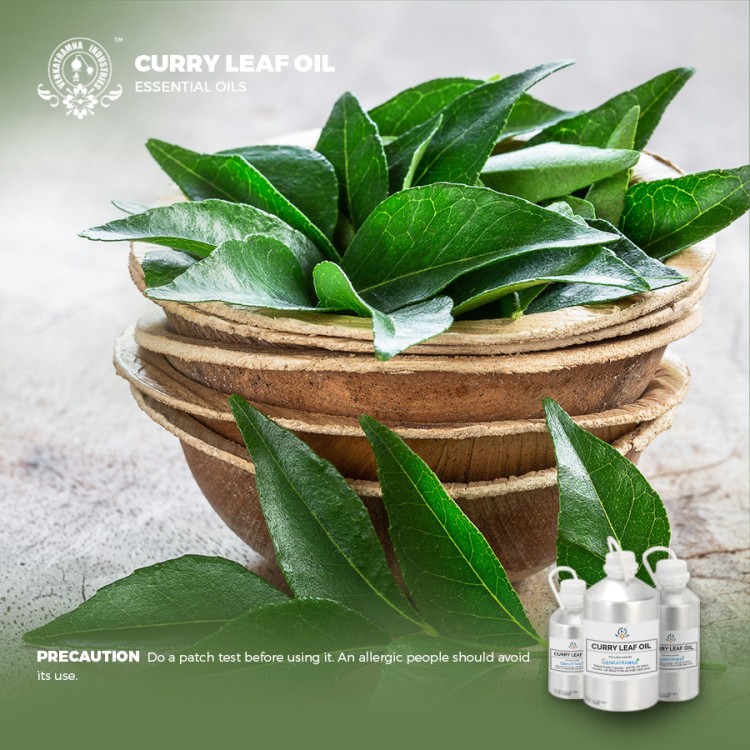The Aromatic Powerhouse: Exploring the World of Essential Oils

Essential oils, the concentrated essence of plants, have been used for centuries for their therapeutic and aromatic properties. From ancient civilizations employing them in religious ceremonies and medicine to modern-day enthusiasts incorporating them into aromatherapy and skincare, these potent liquids offer a diverse range of benefits. Understanding the intricacies of essential oils, from their extraction methods to their potential uses and safety precautions, is crucial to harnessing their full potential.
What are Essential Oils?
Essential oils are volatile, aromatic compounds extracted from various parts of plants, including flowers, leaves, stems, roots, seeds, and bark. These compounds are responsible for the plant’s characteristic fragrance and play a vital role in its defense mechanisms and pollination. Unlike vegetable oils, essential oils are not greasy and evaporate quickly, hence the term "volatile."
The chemical composition of essential oils is incredibly complex, often containing hundreds of different compounds that contribute to their unique aroma and therapeutic properties. These compounds include terpenes, esters, aldehydes, ketones, phenols, and alcohols, each possessing distinct characteristics.
Extraction Methods: Unlocking the Plant’s Essence
The method of extraction significantly impacts the quality and therapeutic properties of the resulting essential oil. Several techniques are employed, each suited to different plant materials:
Steam Distillation: This is the most common and widely used method. Plant material is placed in a still, and steam is passed through it. The heat from the steam causes the essential oil to evaporate along with the water vapor. The mixture is then cooled, and the oil separates from the water. This method is suitable for heat-stable plant materials like lavender, rosemary, and peppermint.
Cold Pressing (Expression): Primarily used for citrus fruits like lemon, orange, and grapefruit. The fruit’s rind is mechanically pressed, releasing the essential oil. The oil is then separated from the fruit juice and pulp.
Solvent Extraction: Employed for delicate flowers like jasmine and rose that are easily damaged by heat. A solvent, such as hexane or ethanol, is used to dissolve the essential oil from the plant material. The solvent is then evaporated, leaving behind the essential oil, often referred to as an "absolute." This method is generally considered less desirable due to potential solvent residue.

CO2 Extraction: A relatively new and increasingly popular method. Carbon dioxide is used as a solvent under high pressure and low temperature. This process extracts a broader range of compounds than steam distillation, resulting in a more complete and potent essential oil. The CO2 is then removed, leaving no residue.

Enfleurage: An ancient and labor-intensive method primarily used for delicate flowers like jasmine and tuberose. Flowers are laid on a layer of purified animal fat, which absorbs their fragrance. The fat is then extracted with alcohol, and the alcohol is evaporated, leaving behind the essential oil.

Quality Matters: Choosing the Right Essential Oil
The quality of an essential oil is paramount to its effectiveness and safety. Factors that influence quality include:
Botanical Name: Ensure the oil is labeled with the correct botanical name (e.g., Lavandula angustifolia for true lavender). This helps avoid confusion and ensures you’re getting the desired species.
Extraction Method: Understanding the extraction method provides insights into the oil’s purity and potential presence of residues.
Purity: Look for oils that are labeled as "100% pure" or "therapeutic grade." Be wary of oils that are diluted or contain synthetic additives.
Origin: The plant’s growing conditions and geographical location can influence the oil’s chemical composition and therapeutic properties.
Packaging: Essential oils should be stored in dark glass bottles (amber or blue) to protect them from light degradation.
Price: While not always a definitive indicator, extremely low prices can be a red flag, suggesting a diluted or synthetic product.
Testing and Certification: Look for oils that have been tested for purity and quality by a third-party laboratory. Some certifications, like USDA Organic, can also provide assurance.
Therapeutic Applications: A Holistic Approach
Essential oils have been traditionally used for a wide range of therapeutic applications, including:
Aromatherapy: Inhalation of essential oils can affect the limbic system, the part of the brain responsible for emotions, memory, and behavior. Different oils can evoke different responses, such as relaxation, invigoration, or focus.
Topical Application: Diluted essential oils can be applied to the skin to address various concerns, such as muscle aches, skin irritations, and wound healing. Carrier oils, like coconut oil, jojoba oil, or almond oil, are essential for diluting essential oils before topical application.
Internal Use: While some essential oils are considered safe for internal use, this should only be done under the guidance of a qualified healthcare professional or aromatherapist. Internal use can be risky and may lead to adverse effects if not done correctly.
Popular Essential Oils and Their Uses:
Lavender (Lavandula angustifolia): Known for its calming and relaxing properties. Used to promote sleep, reduce anxiety, and soothe skin irritations.
Peppermint (Mentha piperita): Invigorating and refreshing. Used to relieve headaches, improve digestion, and boost energy.
Tea Tree (Melaleuca alternifolia): Antiseptic and antifungal. Used to treat acne, athlete’s foot, and other skin infections.
Eucalyptus (Eucalyptus globulus): Decongestant and expectorant. Used to relieve coughs, colds, and sinus congestion.
Lemon (Citrus limon): Uplifting and cleansing. Used to boost immunity, improve mood, and disinfect surfaces.
Rosemary (Rosmarinus officinalis): Stimulating and memory-enhancing. Used to improve focus, boost circulation, and relieve muscle pain.
Frankincense (Boswellia carterii): Grounding and spiritual. Used to reduce inflammation, improve skin health, and promote meditation.
Safety Precautions: Using Essential Oils Responsibly
Essential oils are potent substances and should be used with caution. Following safety guidelines is crucial to prevent adverse reactions:
Dilution: Always dilute essential oils before topical application. A general guideline is to use a 1-3% dilution for adults and a 0.5-1% dilution for children and the elderly.
Patch Test: Perform a patch test before applying a diluted essential oil to a large area of skin. Apply a small amount to a discreet area, such as the inner forearm, and wait 24-48 hours to check for any allergic reaction.
Pregnancy and Breastfeeding: Consult with a healthcare professional or qualified aromatherapist before using essential oils during pregnancy or breastfeeding. Some oils are contraindicated during these periods.
Children and Infants: Use essential oils with extreme caution around children and infants. Some oils are not safe for use on children.
Photosensitivity: Some essential oils, particularly citrus oils, can increase skin sensitivity to sunlight. Avoid direct sun exposure after applying these oils topically.
Eye Contact: Avoid getting essential oils in your eyes. If contact occurs, rinse thoroughly with water.
Ingestion: Do not ingest essential oils unless under the guidance of a qualified healthcare professional or aromatherapist.
Storage: Store essential oils in dark glass bottles in a cool, dark place away from heat and direct sunlight.
Conclusion: A Journey into Aromatic Wellness
Essential oils offer a natural and holistic approach to wellness, providing a wide range of therapeutic benefits. By understanding their extraction methods, quality factors, potential uses, and safety precautions, you can safely and effectively incorporate these aromatic powerhouses into your daily life. Whether you’re seeking relaxation, energy, or relief from specific ailments, essential oils can be a valuable tool for promoting physical and emotional well-being. Remember to prioritize quality, safety, and education to unlock the full potential of these natural treasures.
FAQ: Answering Your Essential Oil Questions
Q: What is the difference between essential oils and fragrance oils?
A: Essential oils are naturally extracted from plants and contain therapeutic properties. Fragrance oils are synthetic and designed to mimic the scent of natural ingredients. They do not offer the same therapeutic benefits as essential oils.
Q: Can I use essential oils directly on my skin?
A: No, essential oils should always be diluted with a carrier oil before topical application. Undiluted essential oils can cause skin irritation, sensitization, and allergic reactions.
Q: How do I choose a carrier oil?
A: Common carrier oils include coconut oil, jojoba oil, almond oil, grapeseed oil, and avocado oil. The best choice depends on your skin type and desired effect. For example, coconut oil is moisturizing but can be comedogenic for some skin types. Jojoba oil is similar to the skin’s natural sebum and is suitable for most skin types.
Q: How can I use essential oils for aromatherapy?
A: You can use essential oils in a diffuser, add a few drops to a warm bath, or inhale them directly from a tissue.
Q: Are all essential oils safe for pets?
A: No, some essential oils are toxic to pets. It’s essential to research the safety of specific oils before using them around animals. Consult with a veterinarian before using essential oils on your pets.
Q: How long do essential oils last?
A: Essential oils typically have a shelf life of 1-3 years, depending on the oil and storage conditions. Citrus oils tend to have a shorter shelf life than other oils.
Q: Can I mix different essential oils together?
A: Yes, blending essential oils can create synergistic effects and enhance their therapeutic properties. However, it’s important to research the compatibility of different oils and follow recommended blending guidelines.
Q: How do I know if I’m allergic to an essential oil?
A: Perform a patch test before using a diluted essential oil on a large area of skin. If you experience any redness, itching, or irritation, discontinue use.
Q: Where can I buy high-quality essential oils?
A: Look for reputable suppliers that prioritize quality, purity, and transparency. Read reviews, check for certifications, and ask questions about their sourcing and testing practices.
Q: Can essential oils cure diseases?
A: Essential oils are not a cure for diseases. They can be used as a complementary therapy to support overall health and well-being, but they should not replace conventional medical treatment. Always consult with a healthcare professional for any health concerns.


